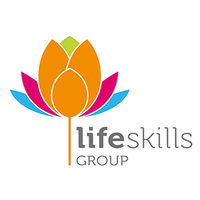Differentiating wellbeing support: To differentiate effectively there are 3 points for us to evaluate.
-
Diagnose: Evaluate the problem
-
Treatment: Evaluate the evidence available for what should be prescribed to treat this problem
-
Observation: Evaluate the impact of the treatment to address the problem
I really don’t like these medical terms to describe these points. While I acknowledge they can be illustrative and useful for conveying purpose, they infer that a student requiring differentiation has a problem that needs curing. This is absolutely not consistent with my thoughts on differentiation and an inappropriate way to think about it.
Meeting students at their point of need is core to good teaching. When a student has needs that are different to their peers we differentiate or make adjustments to meet them. So, I would like to reframe these 3 points as:
-
Understanding student needs
-
Planning evidence-based support
-
Monitoring impact of support
For example:
Student needs: A student is colour blind.
Planning support: Evidence suggests, increasing the light in the classroom, not printing handouts on coloured paper, increasing accessibility through colour contrast (use black and white) and use shapes instead of colour coding in activities. “Underline all the nouns green and verbs blue” We might say “Put a triangle above all the nouns and a star above all the verbs”.
Observation: The student was able to successfully access the curriculum. We will continue to use this strategy and monitor the impact.
In this example, we are confident in our understanding of the students needs, we have a rich evidence base that we can draw upon to select strategies and we can readily observe if the strategy is working or not.
When we are differentiating for wellbeing, however, it becomes a little more complicated. In the example, the student who is colour blind will continue to be colour blind, so we can plan in advance the support that we will provide and how we will monitor it. With wellbeing, the student need is not static, in fact it is heavily influenced by environmental factors and is likely to require real time decision making in relation to what support is required. This leaves teachers with the options of either, trying to plan for every possible scenario or trying to react to any scenario that occurs. These options are not mutually exclusive and in reality, most teachers will draw upon a combination of both; Plan for the most likely scenarios (and the most dangerous) and react to everything that occurs.
With a class full of students with competing needs, differentiation normally focuses on the biggest needs and the most disruptive for obvious reasons. Unfortunately, this leaves those students who have high wellbeing needs but are not disruptive or a learning or health risk down the pecking order to receive differentiated support.
If we focus on how we understand student needs, then we see the impossibility of the task teachers face. Teachers are asked to make a split-second evaluation of the needs of up to 35 students every time they walk into a room. I would argue, that we should and can:
-
support teachers with relevant and reliable real time data about student wellbeing
-
create a safe place to empower student voice that engenders trust between students and teachers
-
and provide teachers and school leaders with the right information at the right time.
[ Rydr Tracy is the Head of Education at Life Skills Group and former Director Strategic Priorities at CESE. He is a specialist in evidence-informed practice in educational innovation, with a career focus on strategic change that improves student outcomes. He draws on a rare blend of successful experience in schools, system leadership roles and industry practice – experience that has given him deep understanding of the complexities of the education sector from the classroom to the boardroom and a demonstrated capacity to generate practical recommendations that are grounded in context and evidence. ]
.png?width=500&height=374&name=Logo_transparent%20(2).png)





